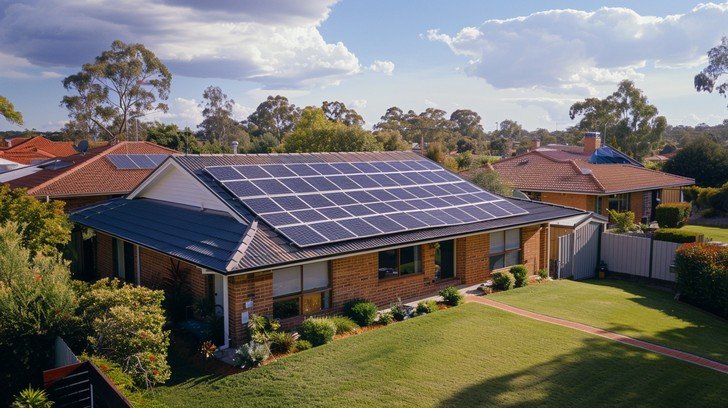Installing solar panels for home is a smart investment that can lead to significant savings on electricity bills and a reduced carbon footprint. However, the installation process can seem overwhelming if you’re not familiar with it. Here are some essential tips to help you navigate the solar panel installation process effectively.
1. Understand Your Energy Needs
Before you even consider installing solar panels, you need to assess your energy consumption:
- Review Your Electricity Bills: Look at your energy bills over the past year to determine your average usage in kilowatt-hours (kWh). This information will help you estimate the size of the solar panel system you need.
- Consider Future Needs: Think about any future changes to your energy consumption, such as purchasing electric vehicles or adding new appliances. This will help you choose a system that meets both current and future demands.
2. Research Local Incentives and Rebates
Many homeowners can benefit from financial incentives for installing solar panels:
- Federal Tax Credits: The federal government offers a tax credit of up to 30% for the total cost of solar installation. Make sure to understand how this can impact your overall investment.
- State and Local Incentives: Check for state-specific programs, rebates, or incentives offered by your local utility company that can further reduce the installation costs.
- Net Metering: Understand how net metering works in your area, allowing you to receive credits for excess energy your solar panels generate and feed back into the grid.
3. Choose the Right Solar Panel System
There are various types of solar panel systems available, and selecting the right one is crucial:
- Monocrystalline Panels: Known for their high efficiency and long lifespan, monocrystalline panels are a popular choice but may come at a higher cost.
- Polycrystalline Panels: Generally less expensive than monocrystalline panels, polycrystalline panels offer decent efficiency but may take up more space.
- Thin-Film Panels: Lightweight and flexible, thin-film panels are easier to install but typically have lower efficiency rates.
Consider factors like your budget, available roof space, and aesthetic preferences when choosing the type of panel.
4. Select a Qualified Installer
Choosing the right installer is one of the most critical steps in the process:
- Research Local Installers: Look for reputable solar panel installation companies in your area. Examine opinions and test their scores on platforms like Yelp or Google.
- Verify Credentials: Ensure the installer is licensed, insured, and certified by relevant organizations, such as the North American Board of Certified Energy Practitioners (NABCEP).
- Ask for References: Request references from previous clients to get a sense of the installer’s workmanship and customer service.
5. Get Multiple Quotes
It’s wise to obtain quotes from several different solar installation companies:
- Detailed Estimates: Request detailed proposals that outline the total cost, equipment, and services included. Look for transparency in pricing.
- Compare Features: Don’t just focus on the price; consider the quality of equipment, warranties, and service plans.
- Watch for Hidden Costs: Ensure that the quotes cover all costs, including permits, installation, and any potential maintenance fees.
6. Understand the Installation Process
Understanding what to anticipate at some point of the set up allow you to put together:
- Site Assessment: A professional installer will conduct a site assessment to evaluate your roof’s condition, angle, and shading to determine the best placement for the panels.
- Permitting: The installer should handle all necessary permits and inspections required by local regulations.
- Installation Timeline: Ask for an estimated timeline for the installation process, including any potential delays.
7. Plan for Maintenance
Solar panels require minimal maintenance, but planning for it is essential:
- Regular Cleaning: Keep your solar panels clean to ensure maximum efficiency. Dust, debris, and snow can block sunlight and reduce performance.
- Monitoring System Performance: Consider investing in a monitoring system to track the energy production of your solar panels. Many modern systems come with apps that allow you to monitor performance in real time.
- Professional Inspections: Schedule periodic professional inspections to check for any issues and ensure that your system is operating at peak performance.
8. Explore Financing Options
There are several financing alternatives to be had to make sun panel installation greater low cost:
- Cash Purchase: If you can afford to pay upfront, buying solar panels outright will often save you the most money in the long run.
- Solar Loans: Many lenders offer specific loans for solar panel installations, allowing you to spread the cost over time.
- Leasing Options: Some companies offer solar leases or Power Purchase Agreements (PPAs), where you can pay for the energy generated rather than the system itself.
9. Be Aware of Your Solar Panel Warranty
Understanding the warranty for your solar panels and installation is crucial:
- Panel Warranty: Most solar panels come with a warranty of 25 years that covers defects and performance.
- Installation Warranty: Ensure that the installer offers a warranty on their workmanship, typically ranging from 1 to 10 years.
Conclusion
Solar power installation at home is a fantastic way to reduce your energy costs and make a positive impact on the environment. By assessing your energy needs, researching incentives, choosing the right system, and selecting a qualified installer, you can make an informed decision that maximizes your investment. With careful planning and consideration, you’ll be well on your way to enjoying the benefits of solar energy for years to come. Embrace renewable energy and take the first step toward a sustainable future today!

